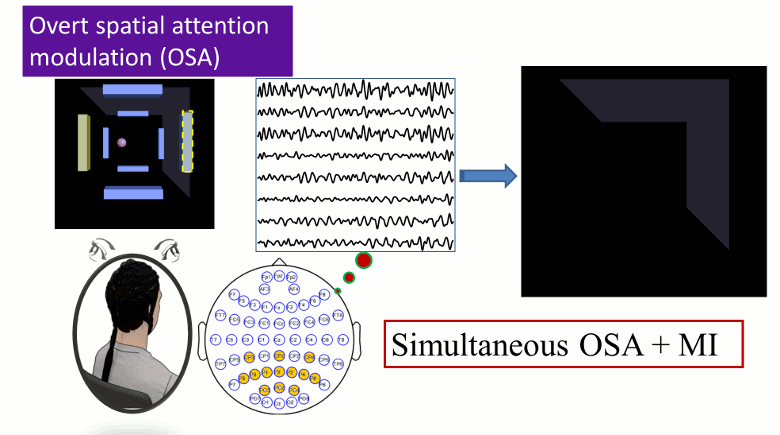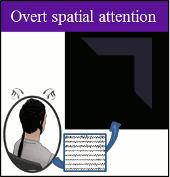
Brain-computer interfacing (BCI) is a promising method for providing alternative connections between the brain and the outside world in concert with natural connections or re-establishing natural limb movement in cases where these have been potentially disrupted by disease or injury. Very little work has been done regarding the extension of noninvasive EEG based brain-computer interfacing (BCI) to practical three-dimensional (3D) control. Previous research based only on motor imagery has shown limited success in 3D control due to non-responders to the traditional motor imagery paradigm, and has required a significant number of extensive training sessions. Here we propose a novel task which utilizes the endogenous modulation of visuospatial attention, defined here as overt spatial attention (OSA), and demonstrate similar control to conventional motor imagery (MI) based BCI. We further show the evidence for the functional independence of traditional MI and the OSA, as well as an investigation into the simultaneous use of both. Specifically, we demonstrate that sixteen subjects can robustly control a cursor during an eight target center out task through the simultaneous OSA and MI modulation resulting in starting and ending accuracies (session one and three) of 50% and 59%. Besides providing robust three-dimensional control through endogenous modulation in sixteen subjects, nine subjects further demonstrated high accuracy (51.5% Session 1, 50.5% Session 2) and information transfer rates (ITR, 29.7±1.2 bits/min) in two sessions of twelve target, center out three-dimensional control tasks, significantly outperforming the ITR of 1-D and 2-D control tasks. Through the combination of the two strategies (MI and OSA) a substantial portion of the recruited subjects were capable of robustly controlling a virtual cursor in 3D space. The proposed novel approach could broaden the dimensionality of practical BCI control and shorten the training time.

